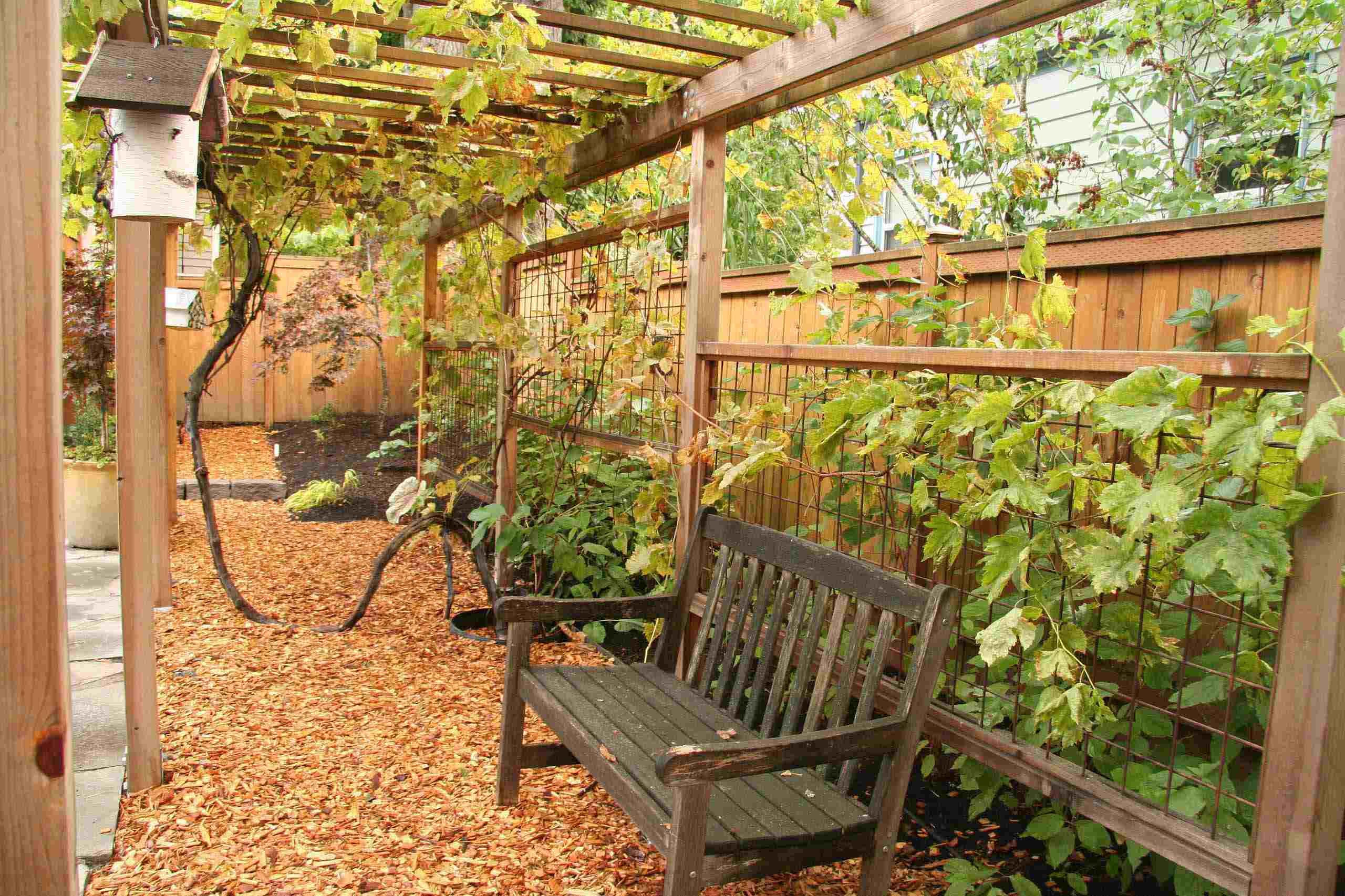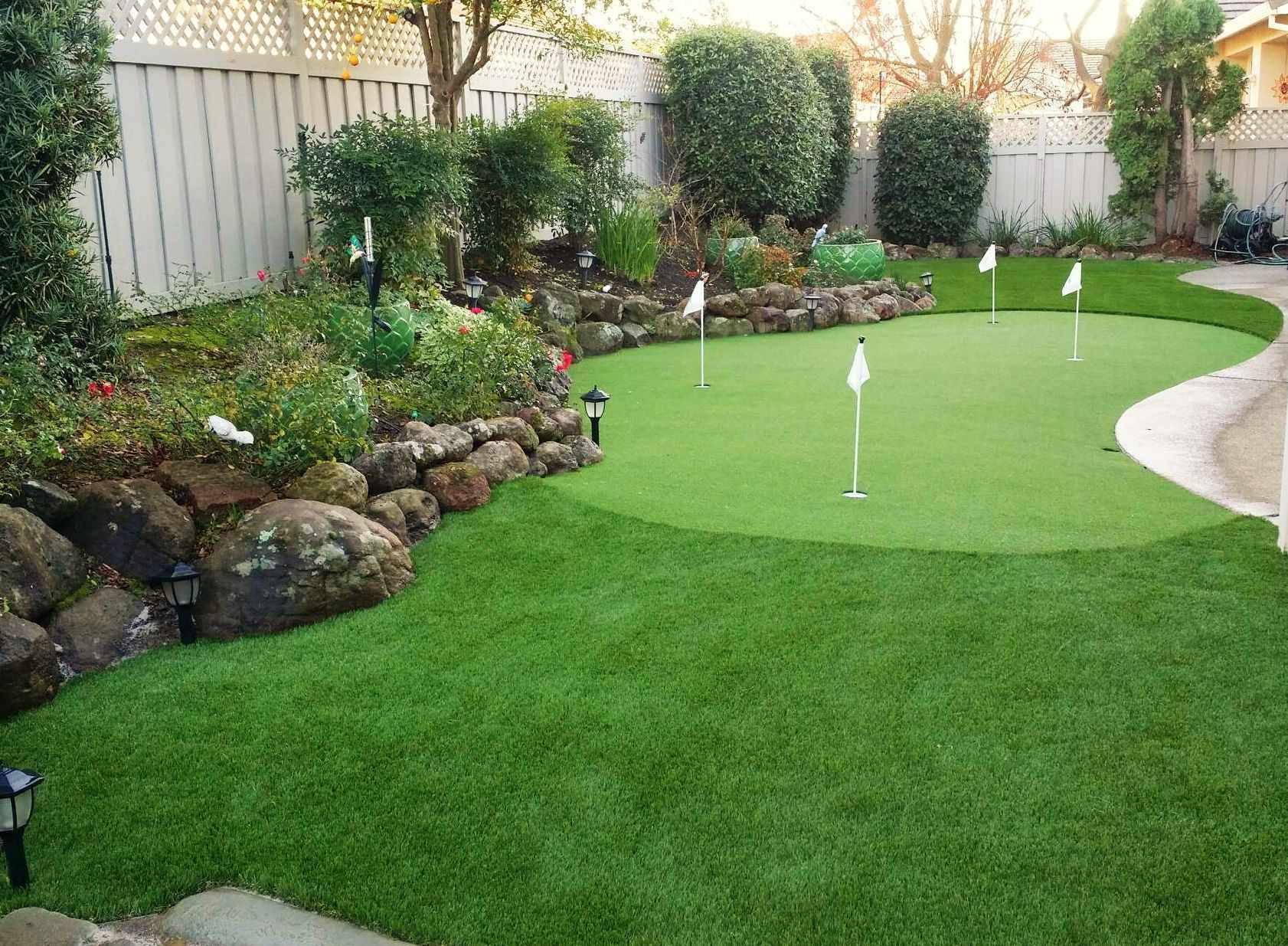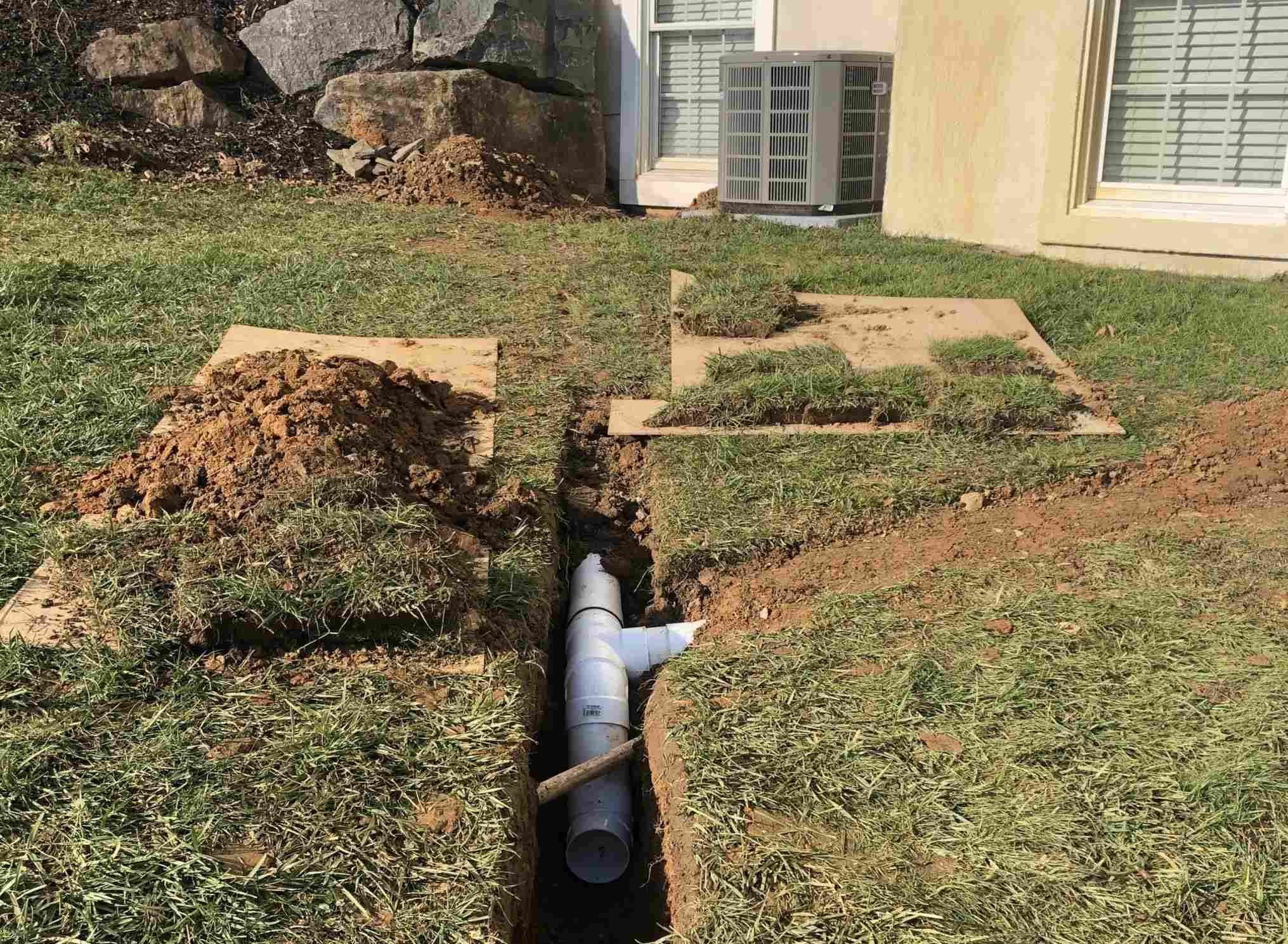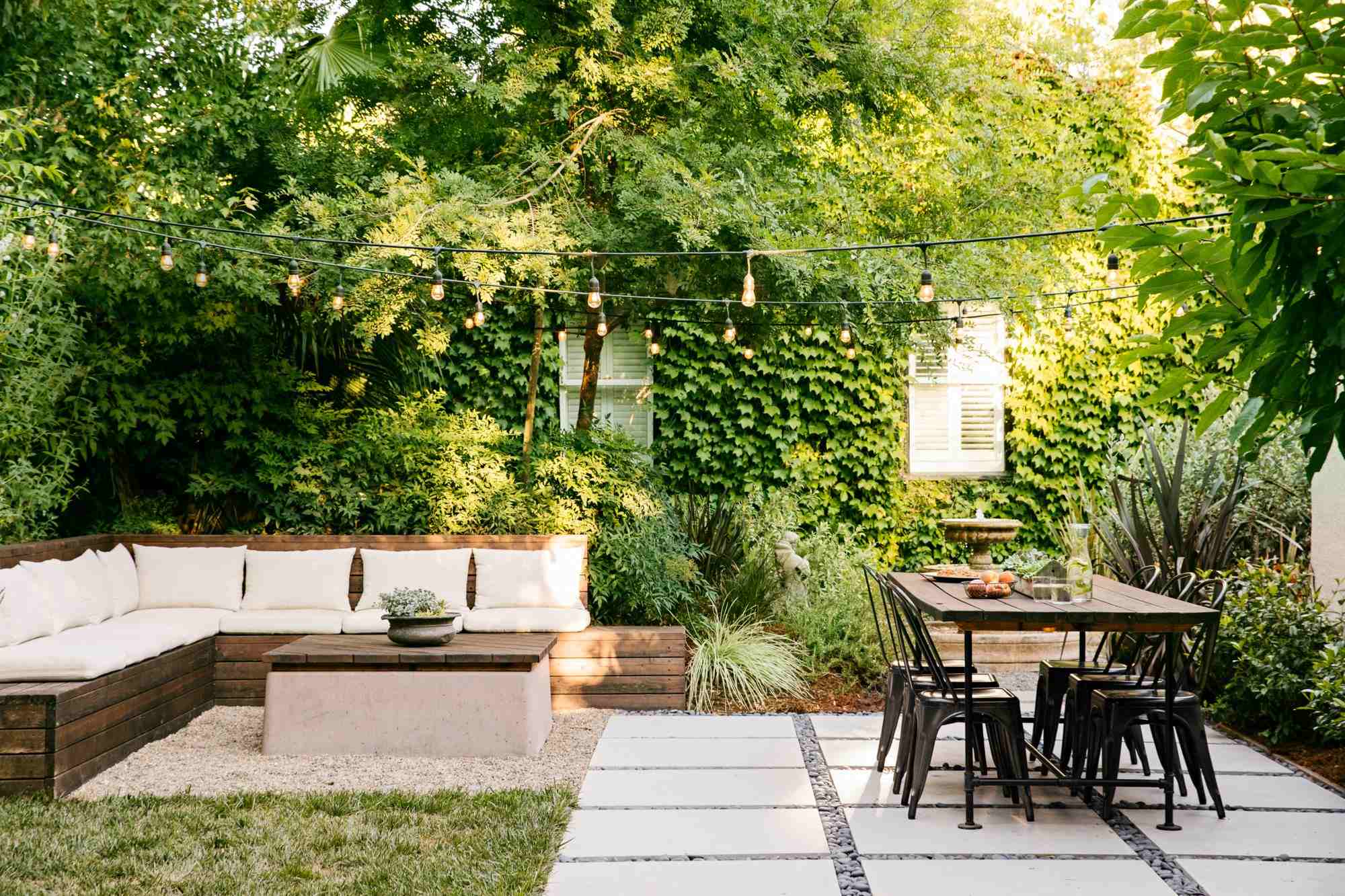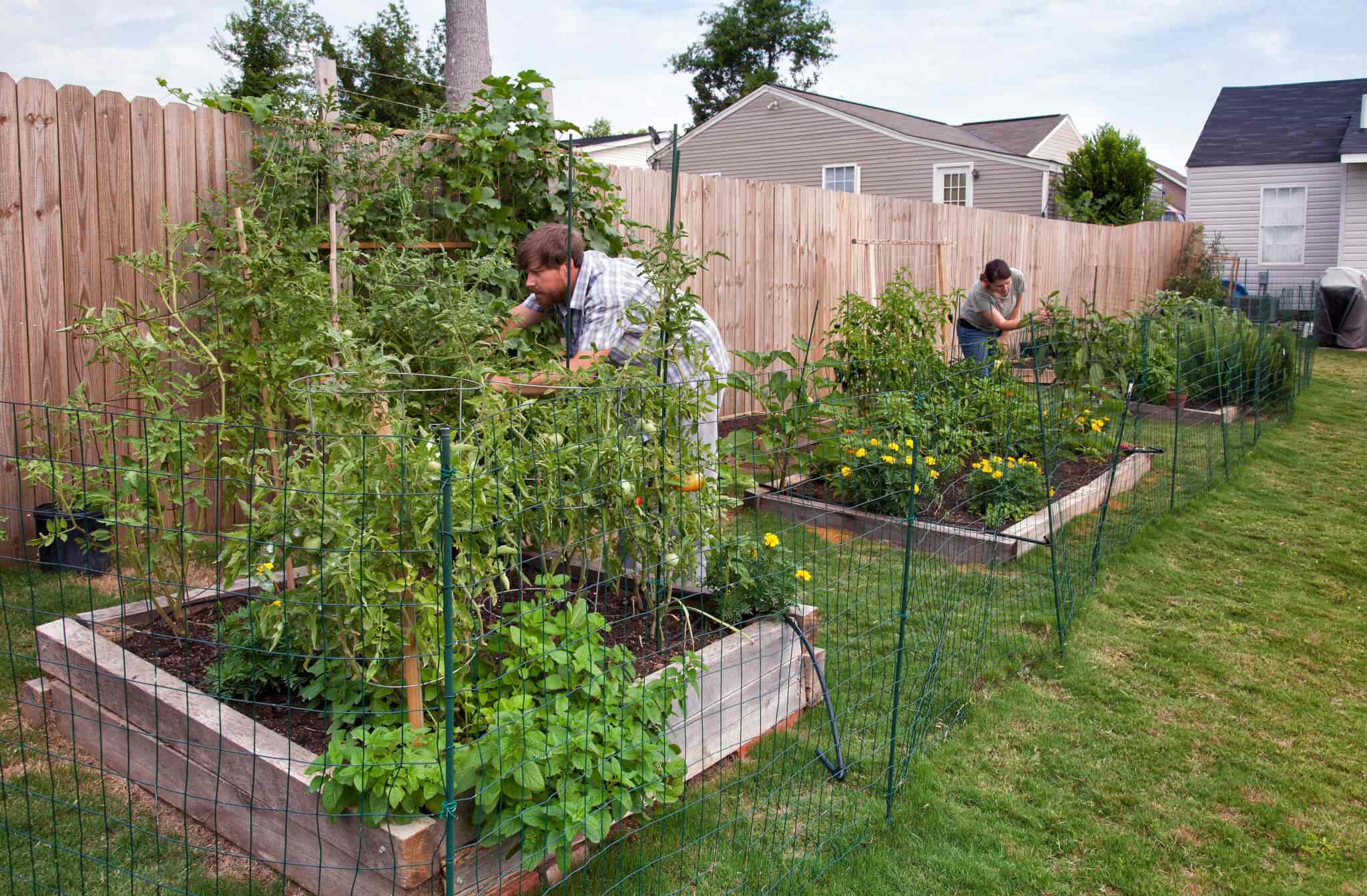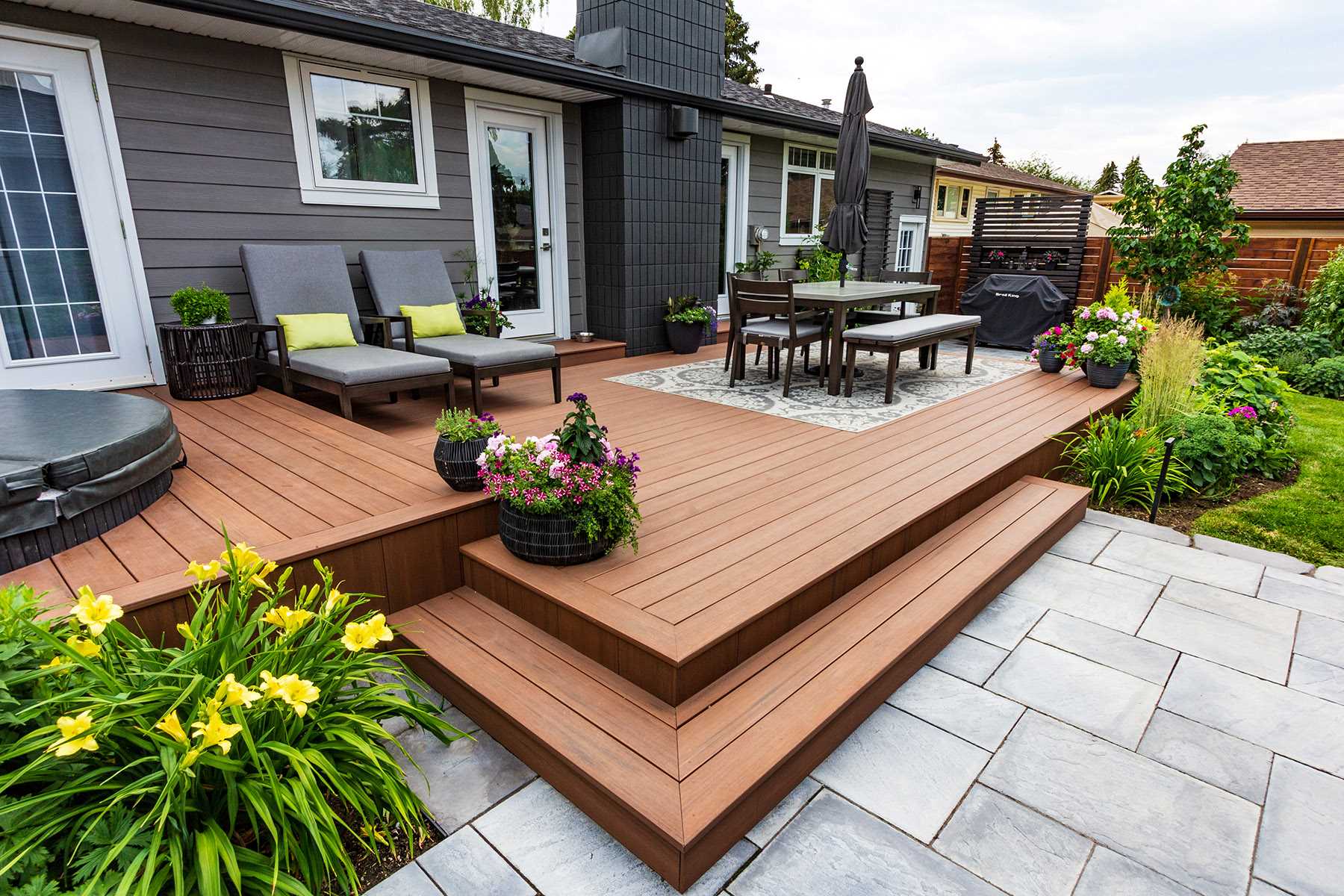Home>Garden Design>How To Cement A Backyard


Garden Design
How To Cement A Backyard
Modified: August 29, 2023
Learn how to create a stunning backyard with our comprehensive guide on landscape design. Transform your outdoor space with expert tips and ideas.
(Many of the links in this article redirect to a specific reviewed product. Your purchase of these products through affiliate links helps to generate commission for Chicagolandgardening.com, at no extra cost. Learn more)
Table of Contents
Introduction
Welcome to the world of landscape design! Creating a beautiful backyard is an exciting and rewarding endeavor that allows you to transform your outdoor space into a personal oasis. One of the key elements in landscape design is the use of cement, which provides a solid foundation for various features such as patios, pathways, and retaining walls.
Whether you’re a seasoned DIY enthusiast or a beginner looking to take on a new project, this article will guide you through the process of cementing your backyard. From preparation to application, we’ll cover each step in detail, ensuring that you have the knowledge and confidence to tackle the task.
Cement is a versatile and durable material that can withstand the elements and add a sense of sophistication to your landscape design. With proper planning and execution, you can create a backyard that not only looks visually stunning but also serves as a functional space for outdoor activities and gatherings.
In this article, we’ll walk you through the process of cementing your backyard, starting with preparing the area and gathering the necessary materials and tools. We’ll then guide you through clearing the space, leveling the ground, and creating a solid base layer to ensure a stable foundation for your cement project.
Next, we’ll delve into the steps of mixing the cement and applying it to your backyard. We’ll provide you with helpful tips and techniques to achieve a smooth and even finish. Lastly, we’ll discuss the finishing touches that will elevate your cemented backyard to the next level, from adding decorative elements to creating a polished surface.
So, if you’re ready to embark on your journey of transforming your backyard into a stunning oasis, let’s dive in and learn how to cement your way to a beautiful outdoor space!
Step 1: Preparing the Backyard
Before you start the process of cementing your backyard, it’s crucial to properly prepare the area to ensure a successful project. This step sets the foundation for the rest of the process and helps create a smooth and long-lasting finished product.
First, take some time to assess your backyard and identify the specific areas where you plan to apply the cement. Consider the purpose of each area, whether it’s a patio, pathway, or any other feature, and determine the size and shape you desire. This will help you plan the layout and calculate the amount of cement you’ll need.
Next, clear the area by removing any obstacles such as rocks, debris, or existing structures. If there are plants or grass in the designated area, you may need to dig them up or use a sod cutter to create a clean slate. It’s essential to eliminate any potential obstructions that can prevent the cement from being evenly applied.
Once the area is clear, mark the boundaries of the project using stakes and string or spray paint. This will give you a visual guide during the construction process and help you stay on track.
Additionally, consider any drainage requirements for your backyard. Proper drainage is essential to prevent water from pooling on the surface and causing damage to the cement. Examine the slope of your yard and make necessary adjustments to ensure water flows away from the cemented area.
Lastly, gather the necessary tools for the project. This may include shovels, rakes, tampers, wheelbarrows, and safety equipment such as gloves and goggles. Having the right tools at your disposal will make the job easier and more efficient.
By taking the time to prepare your backyard, you are setting yourself up for success in the cementing process. This step allows you to properly assess the space, clear any obstructions, mark the boundaries, address drainage concerns, and gather the necessary tools.
With the preparation complete, you’re now ready to move on to the next step: gathering the materials and tools required for the cementing project.
Step 2: Gathering Materials and Tools
Now that you have prepared your backyard for the cementing process, it’s time to gather the materials and tools you will need to complete the project successfully. Being well-prepared will save you time and ensure a smooth workflow throughout the cementing process.
The primary material you will need is cement. There are various types of cement available, so choose the one that best suits your project. Common options include Portland cement, which is the most commonly used type, as well as specialty blends designed for specific purposes such as high-strength or rapid setting cement.
In addition to cement, you will need aggregates such as sand and gravel to mix with the cement. The specific ratio of cement to aggregates will depend on the type of project you are undertaking, so it’s essential to research the correct proportions beforehand.
Other materials you may need include water for mixing the cement, rebar or wire mesh for reinforcement, and plastic sheeting or curing compound to protect the newly poured cement from drying too quickly. Each of these materials serves a specific purpose and contributes to the quality and durability of the cemented area.
Alongside the materials, you will need a variety of tools to carry out the cementing process. Basic tools include a shovel for mixing the cement, a wheelbarrow for transporting materials, and a trowel for applying the cement. Depending on the complexity of your project, you may also require additional tools such as a concrete mixer, a bull float, or a power trowel.
It’s important to ensure that you have all the necessary safety equipment as well. This may include gloves, safety glasses, a dust mask, and knee pads. Cement can be abrasive and may pose health risks, so protecting yourself is of utmost importance.
Make a checklist of all the materials and tools you need, and double-check that you have everything before you begin the cementing process. This will prevent unnecessary delays and allow you to work efficiently from start to finish.
With all the materials and tools gathered, you are now ready to move forward with the cementing process. The following steps will guide you through the remaining stages, from clearing the area to applying the cement and adding the finishing touches.
Step 3: Clearing the Area
With the materials and tools at the ready, it’s time to focus on clearing the designated area in your backyard. Properly clearing the area ensures a clean and level surface for the cement to be applied, resulting in a professional and long-lasting finish.
Begin by removing any remaining vegetation or grass from the area. Use a shovel or a sod cutter to lift and remove the vegetation, ensuring that you remove the root system as well. This will prevent any unwanted growth from emerging through the cement in the future.
Next, remove any large rocks, debris, or objects that may interfere with the smooth application of the cement. Use a rake, shovel, or wheelbarrow to collect and dispose of these items properly. It’s important to create a clear space that allows for an even distribution of the cement mixture.
Once the area is clear of vegetation and debris, inspect the ground for any uneven surfaces or low spots. Use a level or a long straight board to determine if the ground is flat. If any areas are uneven, you can use a shovel or a rake to either remove excess soil or add more to create a level base.
If there are any existing structures or obstructions that cannot be removed, like tree roots or underground utilities, take the necessary steps to work around them. Clear a safe distance around these elements or consult with a professional if needed to ensure that your cement project is not compromised.
Lastly, check the area for proper slope and drainage. It’s important that the area slopes away from your house or other structures to prevent water from pooling or causing damage. Use a measuring tool or a string level to confirm the appropriate slope, and make adjustments as necessary.
Clearing the area is a crucial step in the cementing process as it sets the foundation for a smooth and level surface. By removing vegetation, rocks, debris, and addressing any uneven spots or obstructions, you’re creating an ideal environment for the following steps of the project.
Now that the area is clear, it’s time to move on to the next step: leveling the ground.
Step 4: Leveling the Ground
After clearing the area, the next step in cementing your backyard is to ensure that the ground is level. A level surface is essential for achieving a professional-looking finish and preventing any potential issues with the application of the cement.
Start by using a long straight board or a level to check the overall levelness of the area. Place the board across different areas of the ground and observe if there are any significant dips or high spots. This will give you a general idea of the areas that may require additional attention.
If you notice any low spots during your assessment, you can fill them in with additional soil to bring them up to the desired level. On the other hand, if you identify any high spots, you can use a shovel or a rake to remove excess soil or flatten them out. The goal is to create a flat and even surface throughout the designated area.
As you make adjustments to level the ground, it’s important to continually check your progress using the straight board or level. Take your time and make small adjustments as needed to ensure that the surface is consistently level.
In some cases, you may need to use a compactor tool, such as a hand tamper or a plate compactor, to further compact the soil and create a more solid base. This step is particularly important if you’re planning to install heavy structures or if the ground is naturally soft or prone to settling.
Additionally, consider the proper slope and drainage of the area. The ground should be sloped away from any structures or buildings to ensure that water flows away and does not pool on the surface. Use a level or a measuring tool to confirm that the slope is appropriate, making any necessary adjustments.
By taking the time to level the ground, you’re ensuring a stable and even surface for the cement to be applied. This step is crucial for achieving a professional finish and preventing any future issues that may arise due to uneven ground.
With the ground properly leveled, it’s time to move on to the next step: creating a base layer for the cement.
Step 5: Creating a Base Layer
With the ground leveled, the next step in the cementing process is to create a base layer. The base layer provides a stable foundation for the cement and helps ensure proper drainage and longevity of the project.
The first step in creating the base layer is to excavate the area. Dig down to a depth of around 4-6 inches, removing any loose soil, rocks, or debris as you go. This depth allows for enough space to accommodate the base materials while still providing a solid foundation.
Once the area is excavated, you’ll add a layer of base material, typically consisting of crushed gravel or crushed stone. This base material helps to distribute the weight evenly and provides stability to the cement. Spread the base material evenly and compact it using a hand tamper or a plate compactor. This compaction process promotes a strong and sturdy base layer.
After compacting the base material, use a long straight board or a level to ensure that the layer is flat and even. If there are any low spots or areas that need additional filling, add more base material and repeat the compaction process until you achieve the desired levelness.
As you work on creating the base layer, keep in mind the proper slope and drainage requirements. The base layer should slope away from any structures or buildings at a rate of 1/8 to 1/4 inch per foot. This slope allows for proper water runoff and prevents any water from pooling on the surface.
Once the base layer is level and compacted, consider using a geotextile fabric on top of the base material. This fabric acts as a barrier, preventing the base materials from mixing with the underlying soil, stabilizes the base layer, and helps with drainage.
Creating a solid and well-compacted base layer is crucial for the longevity and stability of your cement project. Take the time to properly excavate, add the base material, compact it, and ensure the desired slope and drainage. This step sets the stage for a successful and durable cemented area.
Now that you have created a solid base layer, it’s time to move on to the next step: mixing the cement.
Step 6: Mixing the Cement
With the base layer in place, it’s time to move on to the exciting step of mixing the cement. Properly mixing the cement is crucial for achieving a smooth and consistent texture that will create a strong and durable finished product.
Firstly, gather all the necessary materials for mixing the cement, including the cement itself, aggregates (such as sand and gravel), and water. Follow the instructions provided by the manufacturer or consult a professional to determine the correct ratio of each component for your specific project.
Start by adding the dry cement into a clean wheelbarrow or mixing container. Use a shovel or a hoe to create a well in the center of the dry cement, creating space for the aggregates and water.
Gradually add the aggregates into the well, ensuring an even distribution throughout the mixture. Use a shovel or a hoe to mix the dry and wet components together, making sure they are fully incorporated. This process allows the aggregates to bond with the cement, adding strength and stability to the mixture.
As you mix the cement, slowly add water to the mixture. It’s important to add water in small increments and mix continuously to achieve the desired consistency. Avoid making the mixture too wet, as it can weaken the final result, or too dry, as it will make the application process challenging.
Continually mix the cement until it reaches a smooth and workable consistency. The mixture should be pliable and able to hold its shape, similar to a thick paste. Test the mixture by scooping a small amount with a shovel or trowel and allowing it to slump off the tool. It should hold its shape without excessive sagging or crumbling.
Throughout the mixing process, be mindful of any additives or admixtures you may be using. Certain additives can enhance the properties of the cement, such as accelerating the drying time or increasing its durability. Follow the manufacturer’s instructions when incorporating additives into the mixture.
Properly mixed cement is the foundation for a successful cementing project. Take the time to follow the correct ratios, gradually add the components, and ensure a smooth and workable consistency. With the cement mixture ready, you’re now prepared for the next step: applying the cement to your backyard.
Step 7: Applying the Cement
Now that you have mixed the cement to the desired consistency, it’s time to move on to the exciting step of applying the cement to your backyard. The application process requires precision and attention to detail to ensure an even and professional finish.
Start by pouring the cement mixture onto the designated area of your backyard. Use a shovel or a wheelbarrow to distribute the cement evenly, covering the entire surface. Work in smaller sections if needed to maintain control and prevent the cement from drying too quickly.
Once the cement is poured, use a flat-tipped trowel or a screed board to spread the cement evenly. Move the tool back and forth in a smooth, sweeping motion, ensuring the cement fills any low spots and creates a level surface. Pay attention to the edges to ensure they are straight and well-defined.
If you’re working on a larger area, consider using a bull float to further smooth the surface and remove any excess cement. The bull float is a large, flat tool that is pushed across the cement, leveling and further consolidating it to create a smooth finish.
At this stage, you may choose to add decorative elements or pattern the cement, if desired. This could include stamping the surface with patterns or incorporating designs using tools and stencils. Ensure you have the necessary equipment and plan the design beforehand.
As the cement begins to set, use a trowel to further smooth and refine the surface. Lightly press the trowel onto the cement, moving it in a circular motion to eliminate any imperfections and create a polished look. Take care not to overwork the cement, as this can cause it to become unstable.
Once you are satisfied with the appearance of the cement, allow it to cure according to the manufacturer’s instructions. This typically involves keeping the cement moist and protected from extreme weather conditions for a specified period of time. Follow the recommended curing process to ensure the durability and longevity of the cemented area.
Applying the cement requires precision, patience, and attention to detail. Take your time to pour, spread, level, and finish the cement, ensuring a smooth and professional-looking surface. By following these steps, you’re well on your way to completing your backyard cementing project.
Step 8: Finishing Touches
As you approach the final stages of your backyard cementing project, it’s time to add the finishing touches that will elevate the overall appearance and functionality of the area. These finishing touches will not only enhance the aesthetics but also provide durability and practicality for your outdoor space.
One of the crucial finishing touches is sealing the cement. Applying a sealant helps protect the surface from stains, moisture, and harsh weather conditions. Choose a high-quality concrete sealer that is suitable for your specific project and follow the manufacturer’s instructions for application, including the recommended drying time between coats.
In addition to sealing, consider adding decorative elements to enhance your backyard. This may include incorporating colored pigments into the cement mixture for a unique look, or adding decorative aggregates and stones to create texture and visual interest.
Further enhance your outdoor space by adding landscaping features such as plants, shrubs, or flowers surrounding the cemented area. Use potted plants or create flower beds around the perimeter to soften the edges and create a seamless transition from the cement to the surrounding natural elements.
If you have created a patio, consider adding outdoor furniture, umbrellas, or even a fire pit to transform the space into a comfortable and inviting gathering area. This will allow you to enjoy your newly cemented backyard while providing functional amenities for relaxation or entertainment.
Lastly, ensure that you regularly maintain and clean the cemented area to preserve its appearance and longevity. Regular sweeping and occasional pressure washing can help remove dirt, debris, and stains that may accumulate over time.
By putting the finishing touches on your backyard cementing project, you are showcasing your creativity and attention to detail. These final steps not only enhance the overall aesthetics but also provide practicality and durability for your outdoor space, allowing you to enjoy the fruits of your hard work for years to come.
Conclusion
Cementing your backyard is a fulfilling and rewarding project that allows you to create a beautiful and functional outdoor space. From the initial preparation to the final finishing touches, each step plays a vital role in ensuring a successful outcome. By following the guidelines outlined in this article, you can confidently tackle the cementing process and achieve a stunning result.
Remember to start by properly preparing the area, clearing any obstructions, and leveling the ground to create a solid foundation. Gather all the necessary materials and tools, ensuring you have everything you need before starting the project. Take the time to mix the cement to the correct consistency, gradually adding water and ensuring a smooth texture.
When applying the cement, work diligently and evenly across the surface, using the appropriate tools to spread and smooth the mixture. Pay attention to detail and take the opportunity to add decorative elements or patterns that will enhance the aesthetics of your backyard.
Finally, finish your cementing project with a protective sealant, landscaping features, and regular maintenance to ensure its longevity and durability. By incorporating these finishing touches, you can create an inviting and functional outdoor space that you and your loved ones can enjoy for years to come.
Cementing your backyard is not just about creating a visually appealing space but also about adding value and functionality to your home. So, roll up your sleeves, gather your tools, and let your creativity shine as you embark on the journey of transforming your backyard into a stunning oasis with the timeless beauty of cement.
